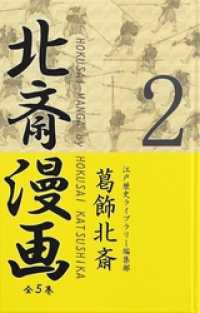Full Description
This book is for artists, teachers, and those who prepare teachers. In the field of art and design education there are many theoretical strands that contribute to the practices of teaching and learning in the visual arts. The problem for artist teachers and those who prepare teaching artists is how to frame the diverse methodologies of art and art education in a way that affords divergent practices as well as deep understanding of issues and trends in the field. Teachers need a field guide that provides a contextual background of theory in order to make their own teaching practice relevant to contemporary art practices and important ideas within the field of education. The book, in its content and presentation of content is pedagogical; it provides a catalyst and prompt for meaningful and personal artistic inquiry and exploration.
The book describes connections between teaching and artistic practices including the pedagogical turn in contemporary art. As a book for artists and designers, it is graphically compelling and visually inspiring. It is designed to be engaging for the practitioner and theoretically robust. A problem with many current texts is that they are written by academics who are often a step removed from the issues of classroom instruction and tend use the language of the scholar, which is appropriate for a scholarly journal, but can be difficult for other audiences. This book will bridge this divide through its use of design, narrative, and descriptions of innovative artistic practices. Rather than being a book about "best practice" it is a book about "diverse practices" within art making and teaching.
This field guide to artistic approaches, including methods for teaching art, frames its arguments around critical questions that artists and art teachers must address such as: What is the role of art and design in secondary education? What will I teach? How do we go about teaching art? How do I know if my teaching is working? What is the role of traditional mediums and methods within contemporary art practices? How can art teachers contribute to the reinvention of schools? How might fluency within a medium be connected to important issues within culture, including the culture of adolescents? This book includes examples of approaches that might provoke or inspire artist and pedagogical inquiry. These are approaches that actively engage students in work that disrupts taken for granted conventions about schooling and its purposes. It considers how art and design might transform the school experience for adolescents.
Contents
Introduction
1. Field notes
2. Collage: Composition, improvisation, & resistance
3. Spirit, ink, & memory: Spiritual epistemologies
4. Ideas about nature: Wilderness & an offroad curriculum
5. Mindfulness & gestures of drawing: The human form
6. Photographic paradigms & paradoxes: Three prompts & propositions in a pandemic
7. Occasions for curriculum: On provocations & assignments
8. Artist interviews:
Kevin Cole
Delphine Diallo
Mark Dion
Nina Katchadourian
Oliver Herring
Afterword
Index








